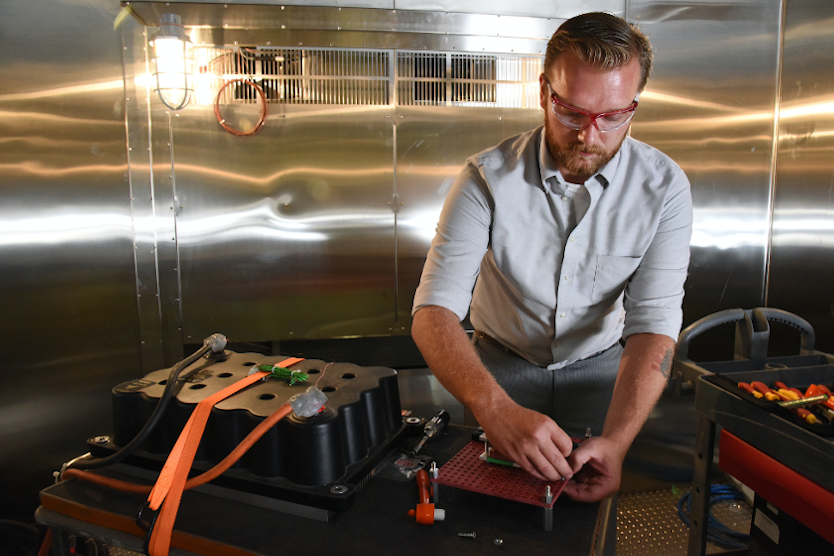
Scientists from the ZSW have teamed up with VARTA and other industrial partners to redesign the Li-ion battery with the objective of reducing critical materials to a minimum while improving energy performance.
© Unsplash
Lithium-ion (Li-ion) batteries remain the decisive storage technology for electromobility. However, the rapidly growing demand for electric vehicles is concomitant with rising competition for the raw materials needed to make these batteries, namely copper, cobalt, nickel and natural graphite, several of which are already “critical” in terms of supply.
Scientists from the Centre for Solar Energy and Hydrogen Research Baden-Württemberg (ZSW) have therefore teamed up with the battery specialist VARTA and other industrial partners to redesign the Li-ion battery with the objective of reducing critical materials to a minimum while improving energy performance. The PerForManZ project is funded by the German Federal Ministry of Education and Research with EUR 2.5 million to run until 2024.
First, they will look at replacing graphite with silicon as the anode material, which has a far higher energy density. To achieve this the project partner and material manufacturer WACKER must develop a solution which prevents the silicon from changing its volume during the electrochemical process.
Then the ZSW team together with experts from BENDER will look at designing a novel arrester structure for the electrodes, which significantly reduces the amount of copper (anode) and aluminium (cathode) used without compromising processing properties. The new lightweight, permeable structure will increase the energy capacity of the cell. They will also look at methods for better utilising the lithium in the cathode which becomes “bound in” when the battery is first charged.
Finally, new vertical coating processes for the lightweight electrodes will be developed and tested in a new pilot facility at ZSW in Ulm, compatible with roll-to-roll production. In parallel, the results will be integrated into the production of wound button cells and round cells at VARTA for testing in various different applications.


